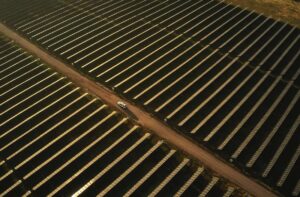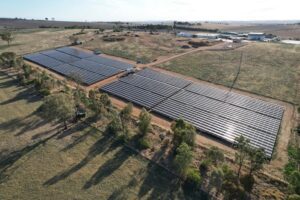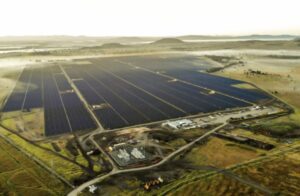A new Australian solar start-up predicts that its concentrated solar photovoltaic technology (CPV) will undercut both conventional flat plate solar PV technologies and fossil fuel technologies.
The Melbourne-based RayGen Resources has raised $1.6 million in a funding round from private investors, including software entrepreneur Craig Winkler, which will allow it to match grants from the Victorian government and the Australian Solar Institute (totalling $2.75 million).
This money will be used to build a 2kW prototype and then a 200kW pilot plant – touted to be the first commercial design n the world to combine high efficiency solar cells with a low cost heliostat collector systems. It predicts that it can bring costs from CSP to $60 a megawatt hour and below.
The ASI, which is contributing $1.75 million of the $3.6 million pilot project cost, said RayGen’s C2PV technology opens up an “immediate opportunity” for a “step reduction” in the cost of large scale solar energy.
By deploying large arrays of relatively inexpensive mirrors, the ASI believes that Raygen can side-step some of the cost issues facing other solar technologies, including concentrated solar thermal (which focuses energy onto one spot so that steam can be generated to drive a turbine).
The attraction of CPV is that it can focus more energy onto highly efficient solar cells, which have an efficiency rating double that of conventional flat panel PV. It means that while cells are expensive, the small amount needed results in reduced systems costs and the long run cost of energy (LCOE) could be around 30 per cent below that of flat panel PV by 2016, according to a report released by IMS Research last week.
The global CPV industry is said to be led by US companies Solar Junction and Amonix, and a 44MW CPV plant is about to be built in South Africa. But Australia has its own CPV technology companies which are competing for global leadership in the area, and has had numerous prototypes installed and operating in the remote areas in northern Australia. Surprisingly, CPV was not included in the recent assessment of 40 energy technologies conducted by the Bureau of Resource and Energy Economics.
Solar Systems, now owned by the listed Silex Systems, has a 600kW pilot plant operating in Victoria, has broken ground on a separate 2MW demonstration plant – a forerunner to a 100MW plant in Mildura, and has also signed agreements to build 1MW demonstration plants in Saudi Arabia and California.
RayGen brings together two people who have played a leading role in CPV – co-founder John Lasich was also a founder of Solar Systems, while Bob Cart was the founder and former CEO and chairman of Californian CPV start-up GreenVolts,
The RayGen technology is based on a similar principle to that of Solar Systems, where the later is using big dishes to focus the power of the sun on a receiver, RayGen proposes to use heliostats (or mirrors) to direct the sunlight. Cart says this delivers a 50 per cent reduction in the mass versus competing technologies and should give it a manufacturing cost of less than $1 a watt. He says this will translate into an LCOE of $50-$60/MWh.
“I am convinced that is the way to get cost down in solar,” Cart told RenewEconomy in an interview. “Our focus is to develop a technology that will not need a subsidy. So the choice will be, do you want coal, gas or solar? Our driving message is that for solar to be successful and broadly adopted, it needs to be on the same bar as fossil fuel.
Cart says the company’s first target markets will be in Australia’s off-grid and mining sectors. “There is real opportunity for us to compete in regional areas and reduce the cost of diesel,” he said, noting that Lasich already had experience with this through the series of pilot plants installed in northern Australia with Solar Systems.
The company has recently moved to a factory east of Melbourne where it is working on its system prototypes. Cart says there is an opportunity for Australian manufacturing capabilities – not in the large, relatively inexpensive materials that will make up the bulk of the plant, but in the high value solar cell modules and the management and control systems.
Cart, who was involved in the Sunshot campaign by the US Department of Energy – which aims to bring solar down to the cost of fossil fuels by the ends of the decade, says the company was going to be based in the US, but Australia was now an attractive proposition. “The opportunity for innovation and solar, the best place in the world is Australia,” he said.
The IMS report predicted that advances in CPV technology would drive down costs by 16 per cent annually, prompting an increase in installations from today’s cumulative total of around 160MW to 3GW by 2016. The authors said that with efficiency records of 34.2 per cent for commercial modules, acceptance of CPV as a utility-scale generation method is predicted to accelerate, even though its up-front costs will be higher than conventional PV.
It predicted that CPV systems are capable of achieving up to 12% lower LCOE compared to PV, but that gap could grow to 30 per cent by 2016, IMS said.








